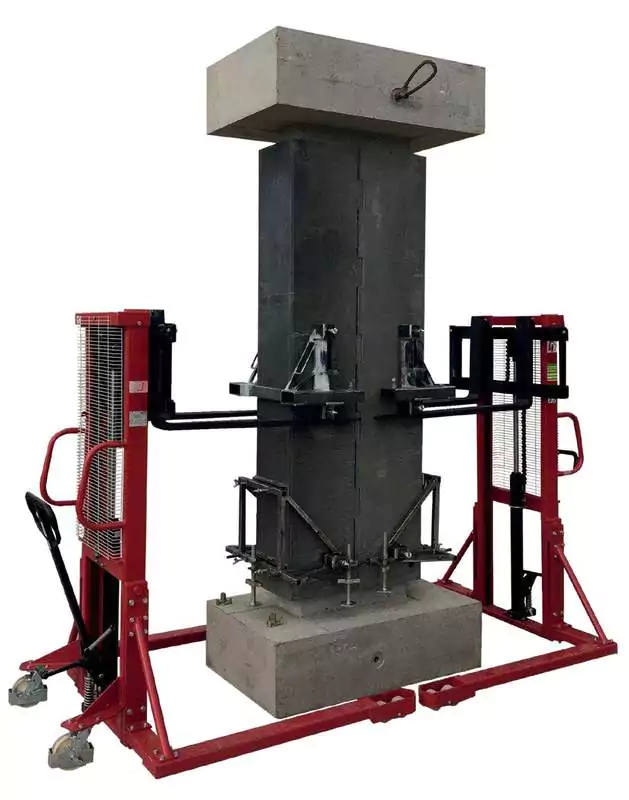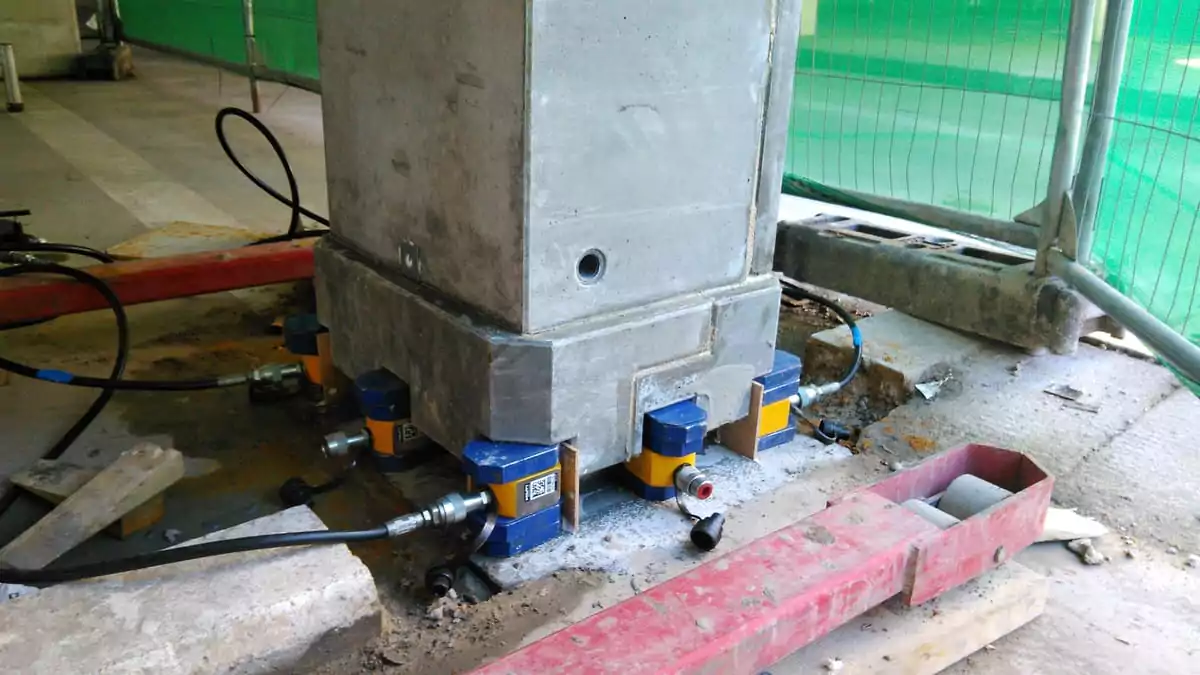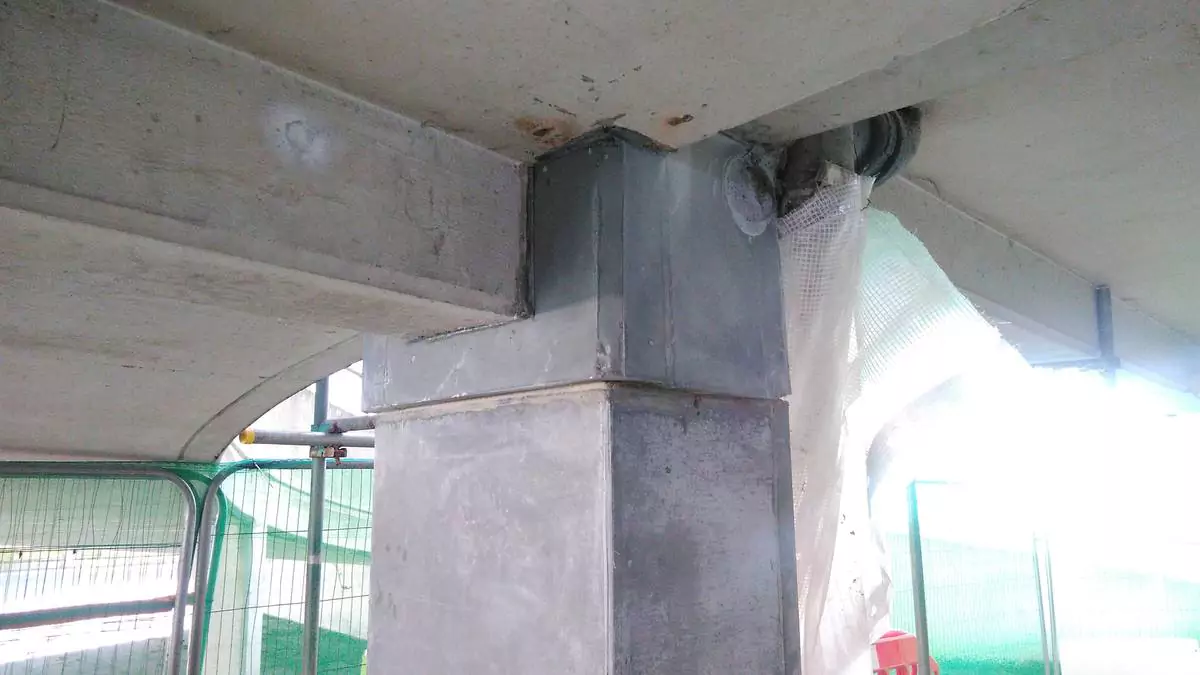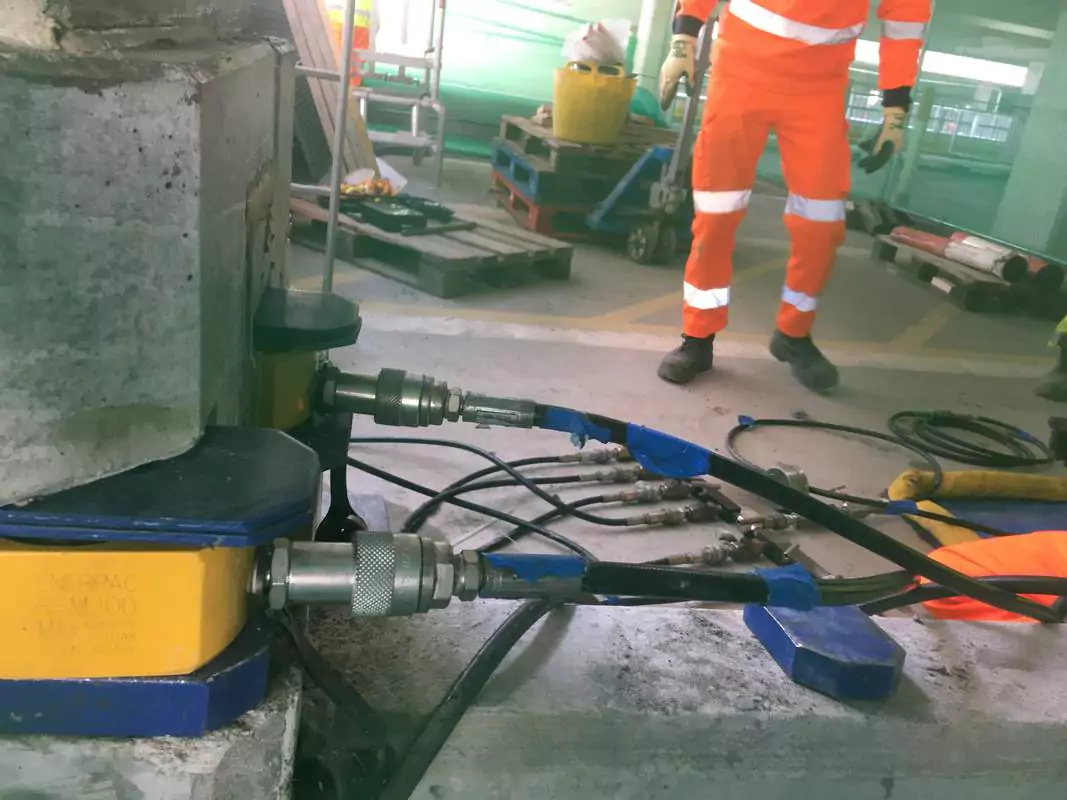
Accessible working
Conventional strengthening methods could not be applied because the columns were located beside the access ramps to the multi-storey building and such work would obstruct access for vehicles.
The proposed solution was to first enclose the columns with 60 mm-thick precast Exoleaf shells, which are made of ultra high-performance fibre reinforced concrete.



